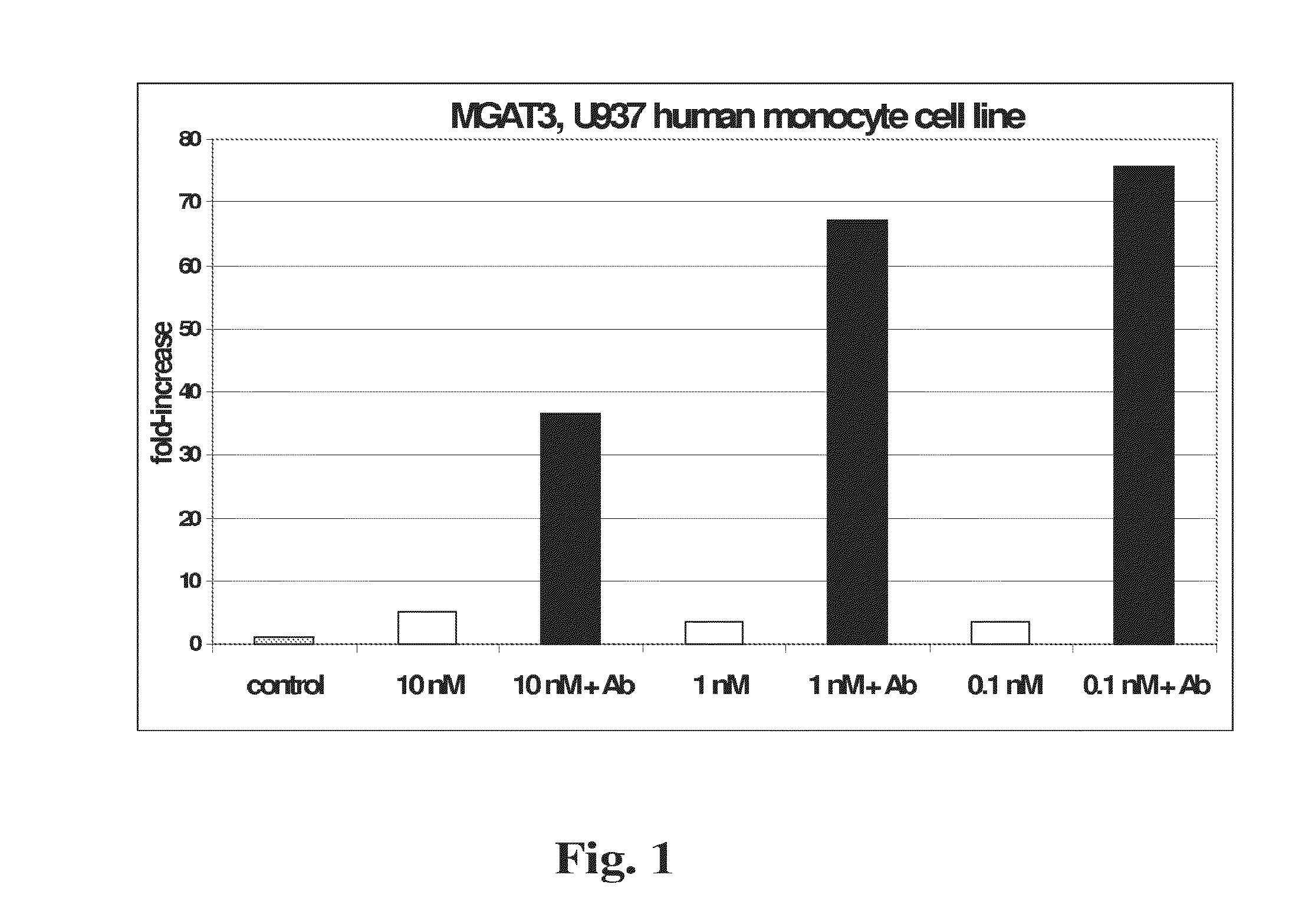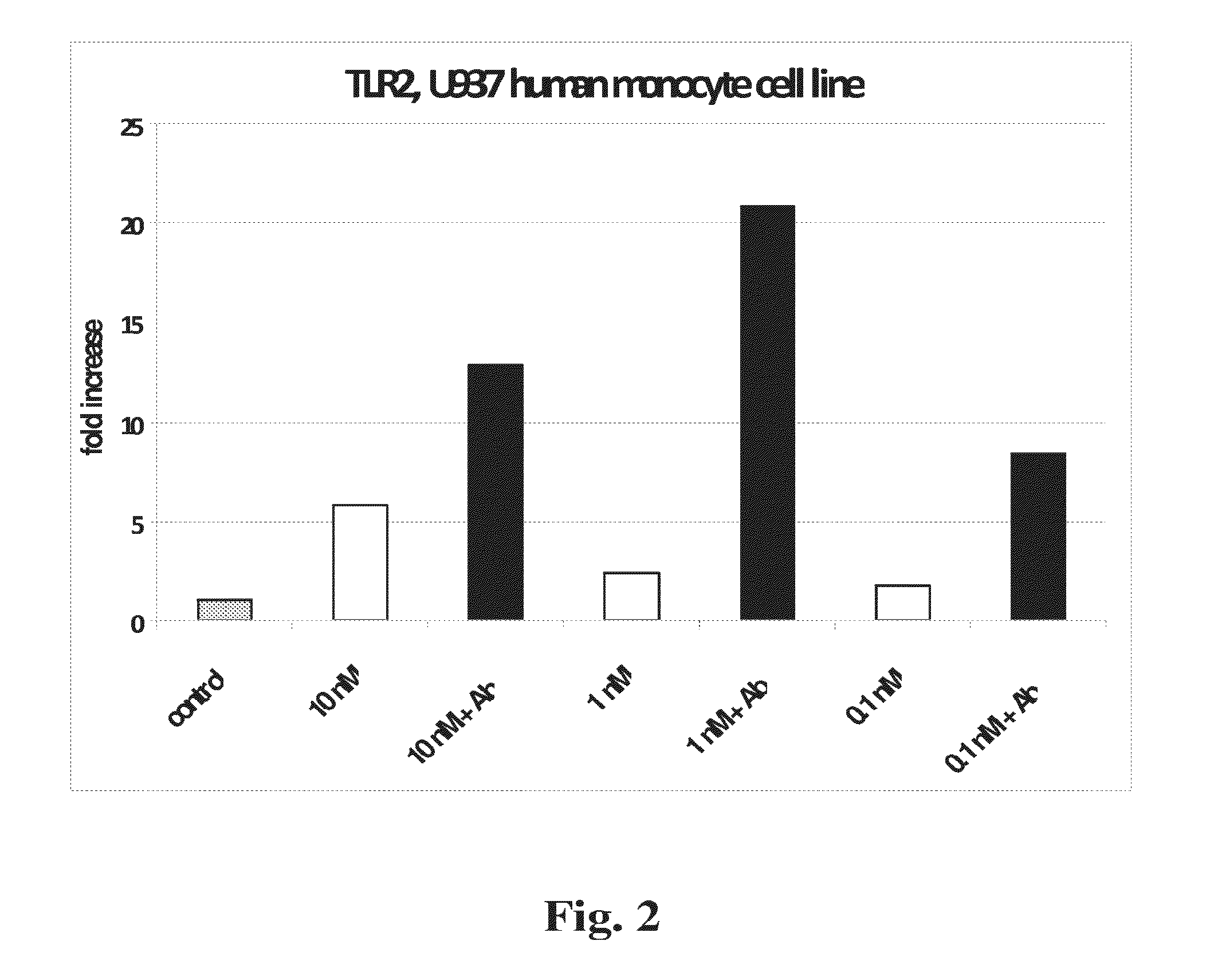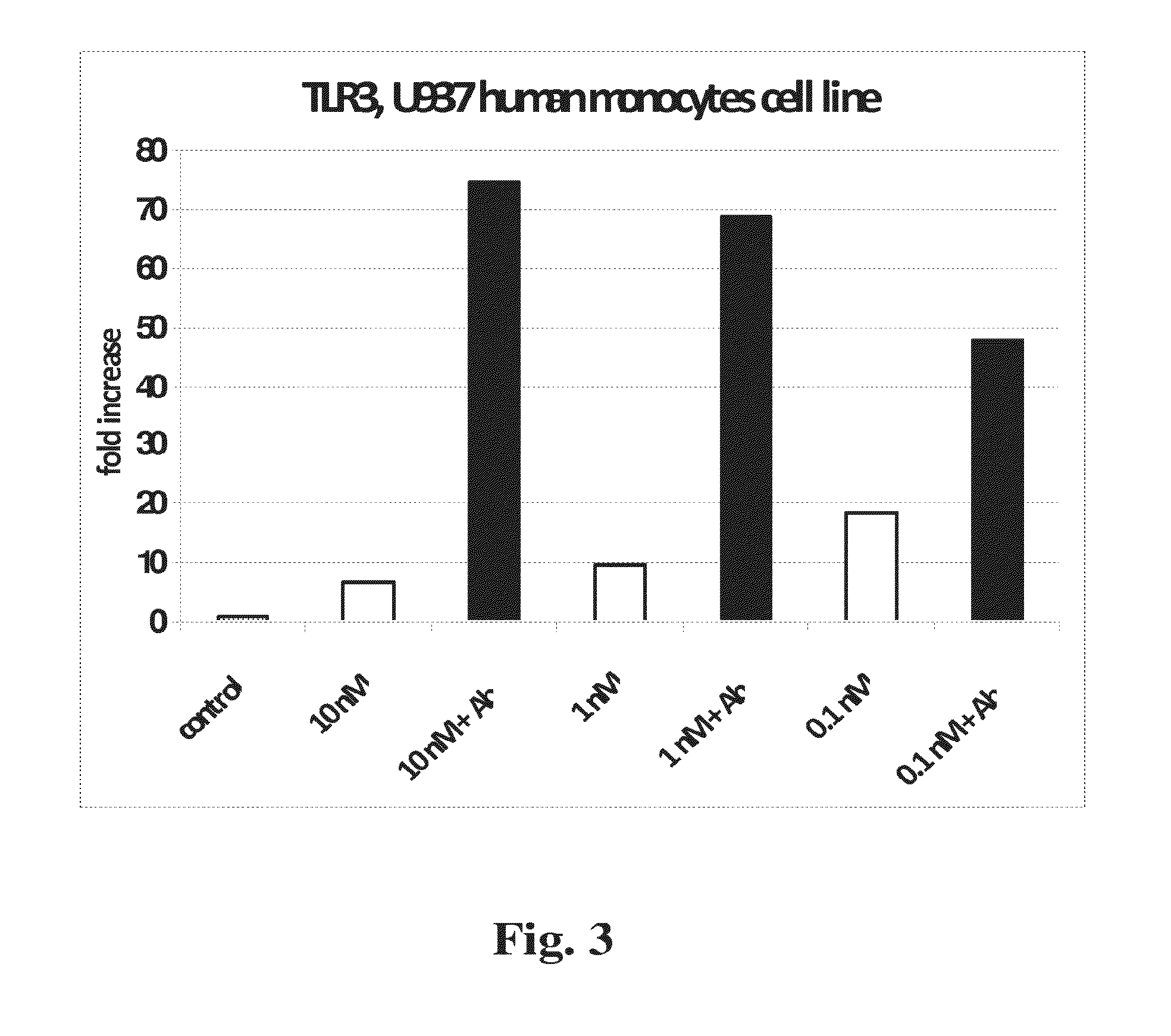Small molecule immunomodulators for alzheimer's disease
- Summary
- Abstract
- Description
- Claims
- Application Information
AI Technical Summary
Benefits of technology
Problems solved by technology
Method used
Image
Examples
example 1
[0257]Cell culture conditions for monocytic cell lines. Human and mouse monocyte cell lines are grown in RPMI-1640 medium with 10% fetal bovine serum (FBS), plus glutamine and pen / strep. For treatment with compounds (curcuminoids+ / −Aβ), replicate sets of 0.5-1.0 mL cultures containing 1-2×106 cells are set up in the wells of 48-well tissue culture plates. Both replicate sets have at least one control well receiving no added curcuminoid to provide baseline expression controls for untreated, and Aβ-only treated cells. Remaining wells receive curcuminoid in a range of 10-fold serial dilutions in DMSO, typically from 0.1 nM-1 Cultures are incubated for 20-24 hours (“overnight”) at 37° C. in atmosphere with 5% CO2. After one overnight, to one of replicate sets of cultures is added Aβ (1-42) peptide to a final concentration of 5 μg / mL.
[0258]RNA isolation and cDNA synthesis. After the first overnight incubation in the presence of curcuminoid, cells from one replicate set of wells are colle...
example 2
Gene Expression Using Quantitative, Real-Time PCR (qPCR)
[0259]Assay development. Gene-specific mRNA levels are determined using a real-time thermocycler, and by normalizing to expression of one or more control genes. Assays for quantifying mRNA levels are based on gene sequences reported in NCBI Genbank. PCR oligonucleotide primers are selected spanning introns to minimize the opportunity for amplication from any contaminating genomic DNA in the RNA preps. Oligonucleotides are typically tested and used at a concentration of 200 nM in qPCR reactions containing SYBR dye. Control reactions include template from cDNA synthesis reactions either + or − reverse transcriptase (RT), as well as no-template controls (ntc). All reactions are performed in triplicate. Reactions are typically run with 40 cycles of 95° C. (10 sec) and 58° C. (30 sec). Melt curves based on incremental 0.5° C. increases are determined for new assays to test for uniformity of amplified products. Reaction conditions ar...
example 3
[0263]TLR gene expression. Expression of genes encoding Toll-like receptors −2, −3 and −4 was similarly tested in response to curcumins and to Aβ (FIGS. 2-4). Compared to MGAT3, normalized expression of TLR2 and TLR4 was relatively less responsive to the tested curcumins, with natural BDC (compound 1) and synthetic analogs inducing lower increases in expression. TLR2 showed slightly higher expression in response to compound 10, with maximal expression at 1 nM concentration in the presence of Aβ (FIG. 2). TLR3 showed limited response to BDC (1), and compounds 33 and 36, plus Aβ. However this gene showed considerably higher expression in response to compound 10, at all concentrations tested (FIG. 3). TLR4 showed modest expression increases in response to all four tested curcumins, with maximal response at approximately 10 nM compound 10 (FIG. 4).
[0264]In addition to relative differences in maximal response, the different TLR genes tested showed independent profiles with regard to curc...
PUM
| Property | Measurement | Unit |
|---|---|---|
| Molar density | aaaaa | aaaaa |
| Molar density | aaaaa | aaaaa |
| Molar density | aaaaa | aaaaa |
Abstract
Description
Claims
Application Information
 Login to View More
Login to View More - R&D
- Intellectual Property
- Life Sciences
- Materials
- Tech Scout
- Unparalleled Data Quality
- Higher Quality Content
- 60% Fewer Hallucinations
Browse by: Latest US Patents, China's latest patents, Technical Efficacy Thesaurus, Application Domain, Technology Topic, Popular Technical Reports.
© 2025 PatSnap. All rights reserved.Legal|Privacy policy|Modern Slavery Act Transparency Statement|Sitemap|About US| Contact US: help@patsnap.com



